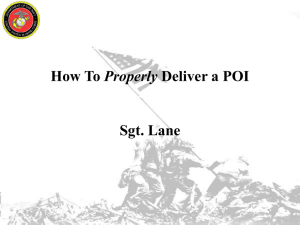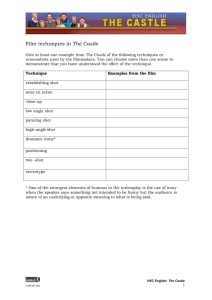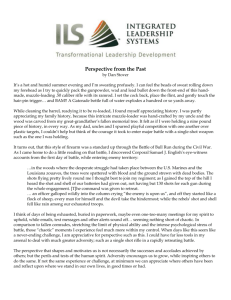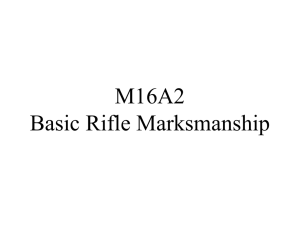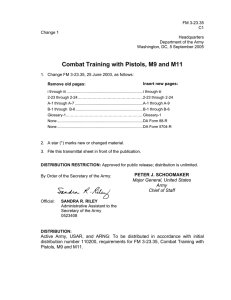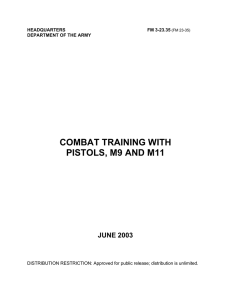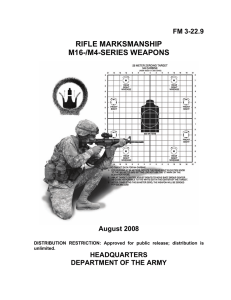M16 - Preliminary Marksmanship Training
advertisement
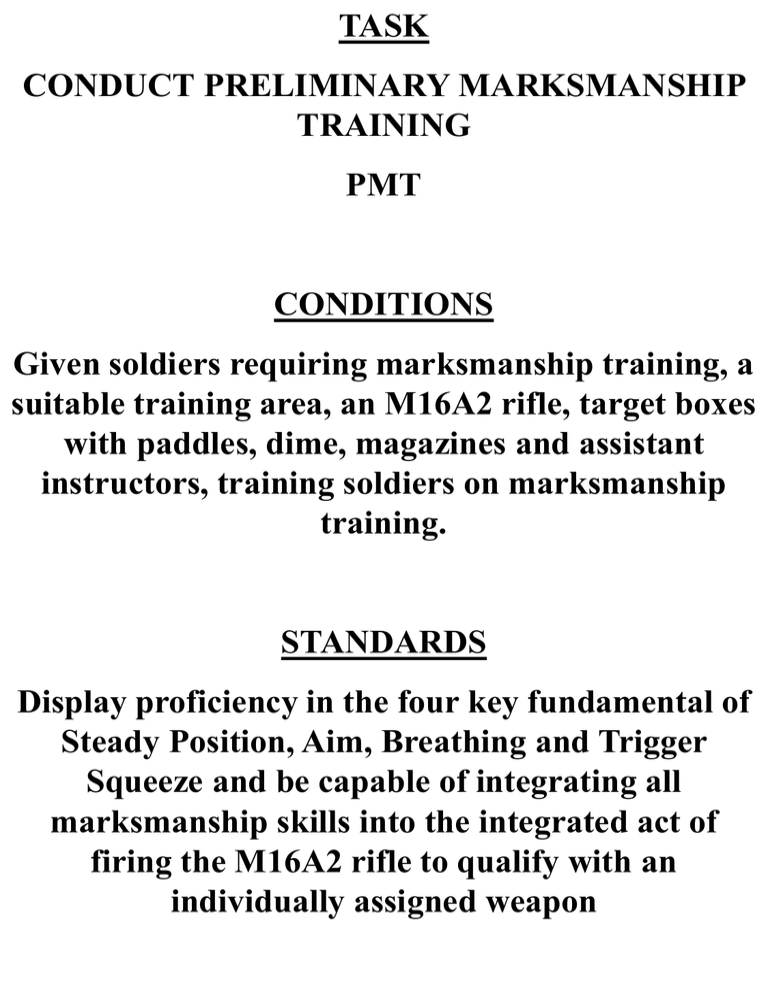
TASK CONDUCT PRELIMINARY MARKSMANSHIP TRAINING PMT CONDITIONS Given soldiers requiring marksmanship training, a suitable training area, an M16A2 rifle, target boxes with paddles, dime, magazines and assistant instructors, training soldiers on marksmanship training. STANDARDS Display proficiency in the four key fundamental of Steady Position, Aim, Breathing and Trigger Squeeze and be capable of integrating all marksmanship skills into the integrated act of firing the M16A2 rifle to qualify with an individually assigned weapon THE BASICS •FUNCTION CHECK • LOAD / UNLOAD M16A2 RIFLE •OPERATE THE M16A2 RIFLE •CLEAR STOPPAGES SLAP PULL OBSERVE RELEASE TAP SHOOT •DOUBLE FEED •MISS FIRE (SQUIB LOAD) Eye Dominance: Determine which eye is dominant to determine which firing method will be utilized— right or left shoulder. Shooting Position: Non-Firing Hand-The handguard should be gripped lightly with slight rearward pressure. Rifle Butt- Is placed in the pocket of the firing shoulder to reduce recoil and to keep steady. Firing hand-The three fingers on the hand grip applies a rearward pressure, the forefinger tip is placed on the trigger when ready to fire. Firing Elbow-Maintains balance. Non-firing elbow- Positioned firmly under the rifle to allow for a comfortable and stable position Support- If sandbags are used for support it should be utilized to provide support to the rifle. Natural Point of Aim-The body is aligned so that the body, rifle and target are aligned with the desired aiming point. AIMING: Focus on the front sight post as a skill which must be acquired with practice. Steady hold and sight alignment are paramount skills to aim effectively Breath Control: During zeroing, there is a moment of natural respiratory pause while breathing when most of the air has been exhaled from the lungs and before inhaling— the shot must be fired before feeling discomfort. The second technique is employed during short exposure targets, and the breath is held when the soldier is about to squeezed the trigger. SUPPORTED FIRING POSITION PRONE UNSUPPORTED POSTION The coach observes the firer to see that he/she• Uses the correct position and properly applies steady-position elements. •Properly loads the rifle. •Holds breath correctly by watching the back of the firer. •Applies proper trigger squeeze, determines whether the firer flinched or jerks by watching soldiers head, shoulders, trigger finger, and firing hand/arm. •Is tense and nervous—may need have firer breathe several times to relax. SIGHTING AND ZEROING: Zeroing is conducted at 25 meters because facilities do not exist to zero at 250 meters. The Elevation knob is turned one click past 8/3 to ensure the bullet strikes in the same location at 250 meters as 25 meters— otherwise a 42m target would be necessary to hit at the exact same spot as 250 meters. The maximum ordinate is reached at approximately 175 meters and hits approximately 7 inches below at 300 meters. So long as a proper zero is obtained all targets may be hit out to 300 meters with no adjustments to the weapon. MOPP FIRING: The weapon will need to be canted to the right or left depending on the mask canister to facilitate a soldier’s ability to obtain proper sight alignment. Increase of shot group size A shot group that is 4cm on the zero target will expand as the bullets go down range—a 4cm shot group at 25m is 48.26cm (or 19”) at 300m. A one inch shot group at 25m will increase to a 10” shot group at 250m. Shot Group Marking: The soldier must mark each shot group for a clear record of his firing practice by connecting three bullet holes on the target with a straight line and placing a number by the shot group. Mark an “X” in the center of the three-shot shot group. When two shots are near one end of the group and the third is toward the other end, mark the X nearer the two close shots. AMMUNITION The M16A2 utilized the 5.56mm, Ball M855 and is the standard NATO round for this weapon system and is easily identified by a green tip. The Cartridge 5.56mm, Tracer, M856 is used in the M16A2 Rifle and is easily recognizable by its red tip. When storing ammo in the open, make sure you place it on dunnage (a palate) at least six inches from the ground and protect it with a cover, leaving enough space for air to circulate. Since the 5.56mm ammo is severely and aversely affected by moisture and high temperatures, only open ammo boxes when ready to issue and use the ammunition. Protect the ammo from high temperatures and the direct sun; never attempt to disassemble ammunition or any of its components, and never grease or lubricate ammunition. TEST Disassemble/Assemble the M16A2 Rifle 1. Perform Functions Check 2. Perform SPORTS 3. What do you do in the event of a double feed? 4. What do you do if the weapon fires but fails to recoil? 5. What do you do if the previous round fails to extract? 6. Demonstrate the prone unsupported position; a. Non-firing hand grip b. Rifle butt position c. Firing hand placement d. Firing elbow placement e. Correct cheek to stock weld f. Correct Support g. Natural point of aim 8. Display proper sight picture (demonstrate). 9. Display proper trigger squeeze (demonstrate). 10. While coaching name four things you are looking for while watching the firer. 11. How large is a good shot group? 12. How would a shot group appear if the firer had a breathing problem on one of his or her shots? 13. How would it appear if a firer had improper trigger squeeze while reading the 25 meter zero card? 14. How would a shot group appear if a firer needs to work on sight picture and all shooting fundamentals? 15. What is the maximum ordinate and where does it occur down range?

